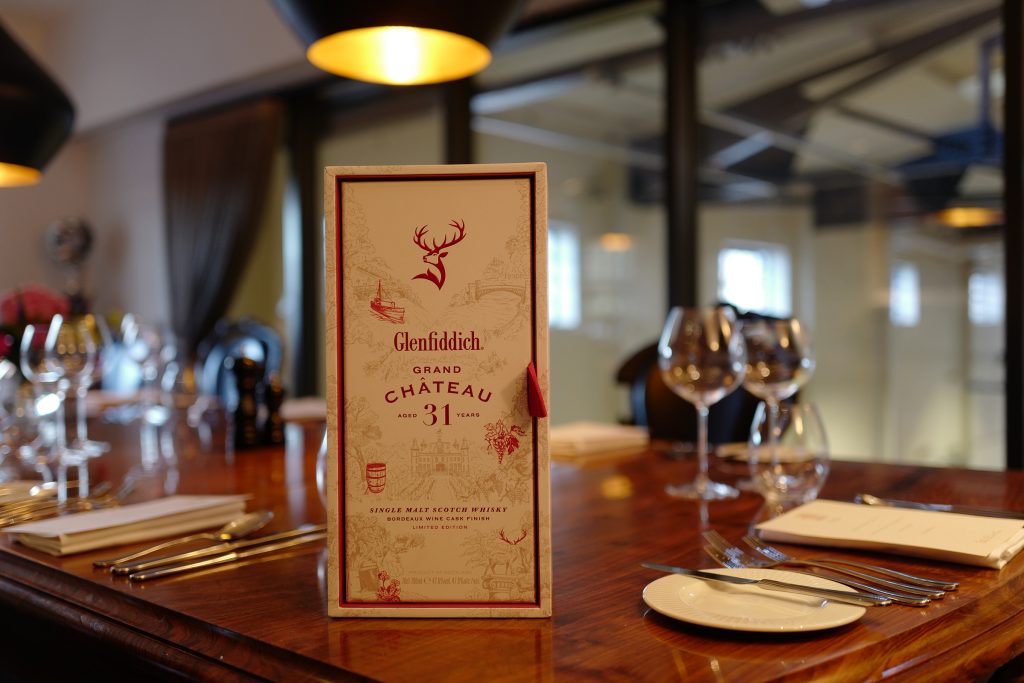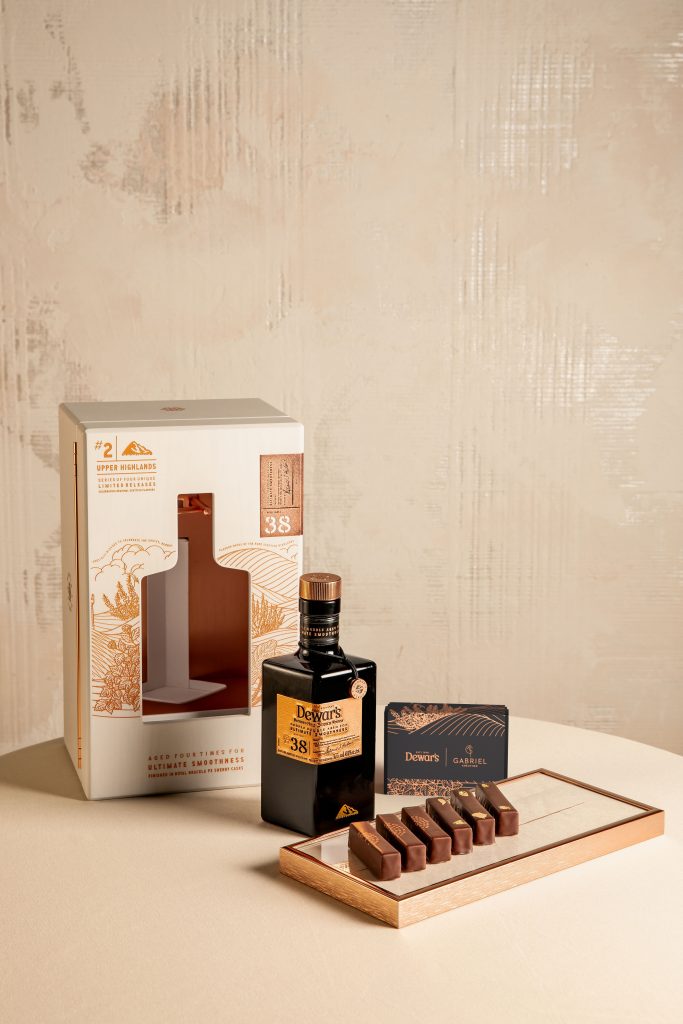September Scotch: Glenfiddich Gets Experimental
A brand new India Pale Ale Cask Finish and hints of more to come

All single malt whisky drinkers know the name Glenfiddich and have most likely consumed one or many of its expressions. It’s another renowned Speyside-style portfolio hailing from Duffton, Scotland with centuries of history behind its development. For our September Scotch series, we did more than taste what Glenfiddich has to offer. We went to the distillery to see for ourselves. There, we spent time with Master Blender Brian Kinsman (the visionary behind one of our favorite Irish whiskey expressions from 2014, Phoenix by Tullamore D.E.W.—another William Grant & Sons brand that Kinsman oversees). Kinsman crafts whiskies that can be consumed neat, with water or ice. But Glenfiddich is a brand that we haven’t been afraid to put in cocktails. And further, a new Experimental Series demonstrates their commitment to pushing the limits on what a single malt can be and how it will taste. In an ever-crowding market, Glenfiddich remains one of the most consumed globally. This is definitely a testament to their quality (and price point), but for a brand that ramped up production during US prohibition, developed a distinct triangular bottle in the late ’50s and was one of the first to bill single malts as a premium product during the ’70s, it’s another tell-tale sign of innovators at work.

Beyond the striking beauty of the Scottish Highlands and the austere nature of the centuries old buildings on the Glenfiddich campus, a few elements caught our attention while touring. Glenfiddich utilizes 28 distinctly-shaped, swan-necked copper pot stills, each of which is smaller than those normally used for single malts. Two spacious distillation rooms stand side by side, their doors and windows open to the outside world, mingling with the atmosphere. It’s there that a distillate (or unaged “new make spirit”) emerges, well after the fermentation process involving water from the Robbie Dhu springs and malted barley. There’s a barrel making and repairing cooperage on site. The brand is one of few to have their own and it allows for complete control of the wood employed in aging. Both the distillation and aging processes lend all Scotch its unique DNA. The fruity, floral and cereal-like notes that define Glenfiddich as a brand come directly from their variations in whisky production.
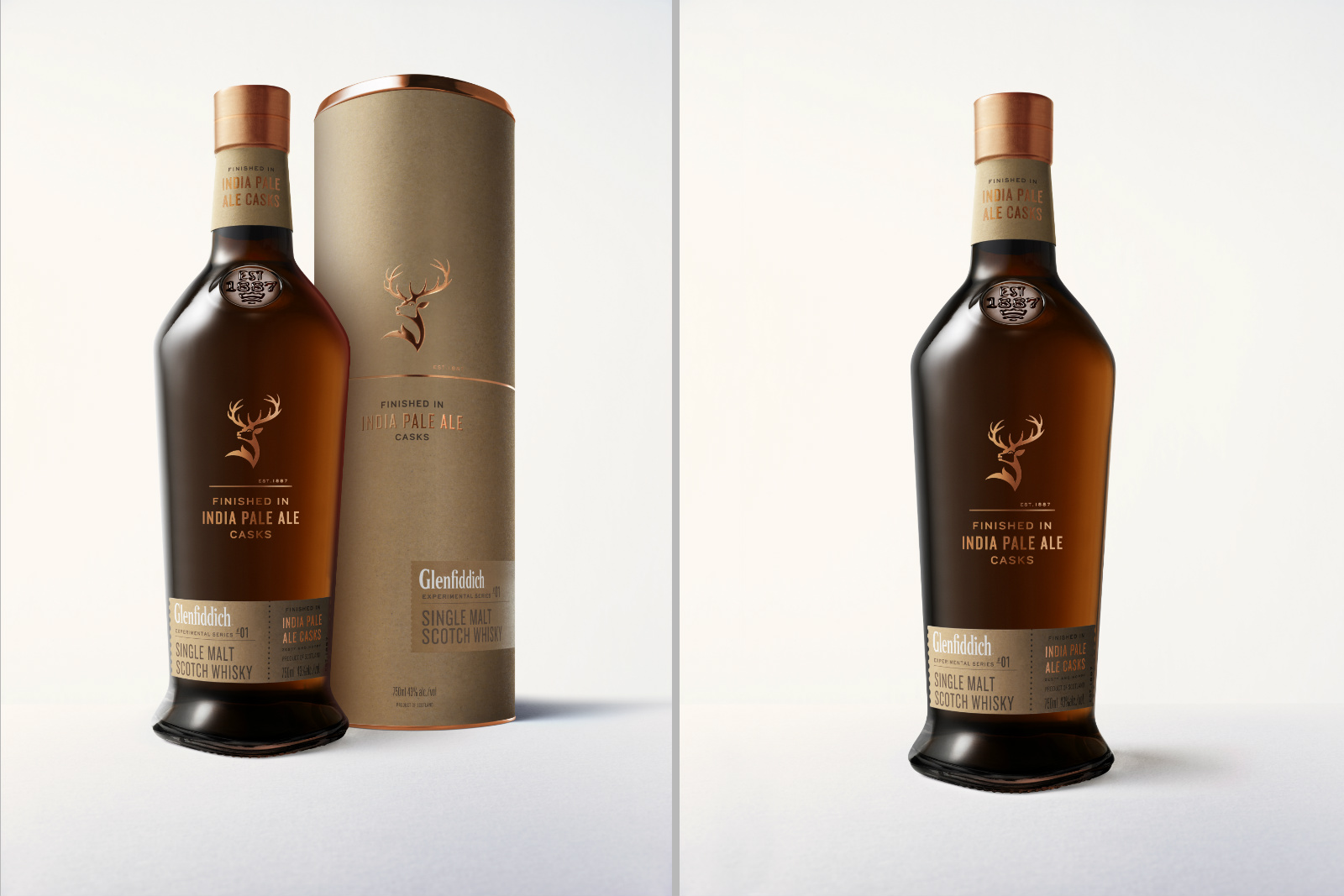
It is here that Kinsman and Speyside Craft Brewery founder Seb Jones developed what will be the first in the Experimental Series: the Glenfiddich India Pale Ale Cask Finish. This is the first ever IPA-finished single malt, and in order for it to happen, Kinsman and Jones developed an IPA first that would affect whisky casks in a way that would then impart those flavors onto the single malt stored inside later. After receiving the casks Jones adds the IPA and explains “We mature that for a month and remove the beer and give the casks back.” There were three separate developmental trials, where the beer itself was honed not to taste like whisky, but to accentuate whisky. The beer, which we tasted, is citrus forward and delightfully hoppy. Unsurprisingly, those notes translate directly to the Glenfiddich India Pale Ale Cask Finish. The single malt tastes of vanilla and caramel, but there’s a surprising zest to it all—and the hops notes last to the very end. Beer finished whisky isn’t a new concept. But the Glenfiddich India Pale Ale Cask Finish succeeds (especially in a refreshing way) where most do not. And it’s reaching American markets on 1 October 2016.

Next on the release roster is Project XX. Kinsman was deeply involved, of course. But so were 20 others. Thus the name. “The selection of the casks and the determination of how the product tastes was done with the brand ambassadors,” he explains. “These guys are whisky experts. They’ve been mostly with us for a very long time. They’ve got a huge amount of knowledge. It felt not only right, but it felt proper to put that knowledge into the product.” Kinsman opened the Glenfiddich reserves to the brand ambassadors and let them select casks by instinct and interest. Kinsman pooled samples. There was an extensive tasting. It then came to marrying them altogether. Bourbon, sherry and port casks are all involved. And the finished product, which will be a permanent portfolio addition upon its presently undeclared launch date, contains so much nuance that it’s sure to delight both experts and novices alike.
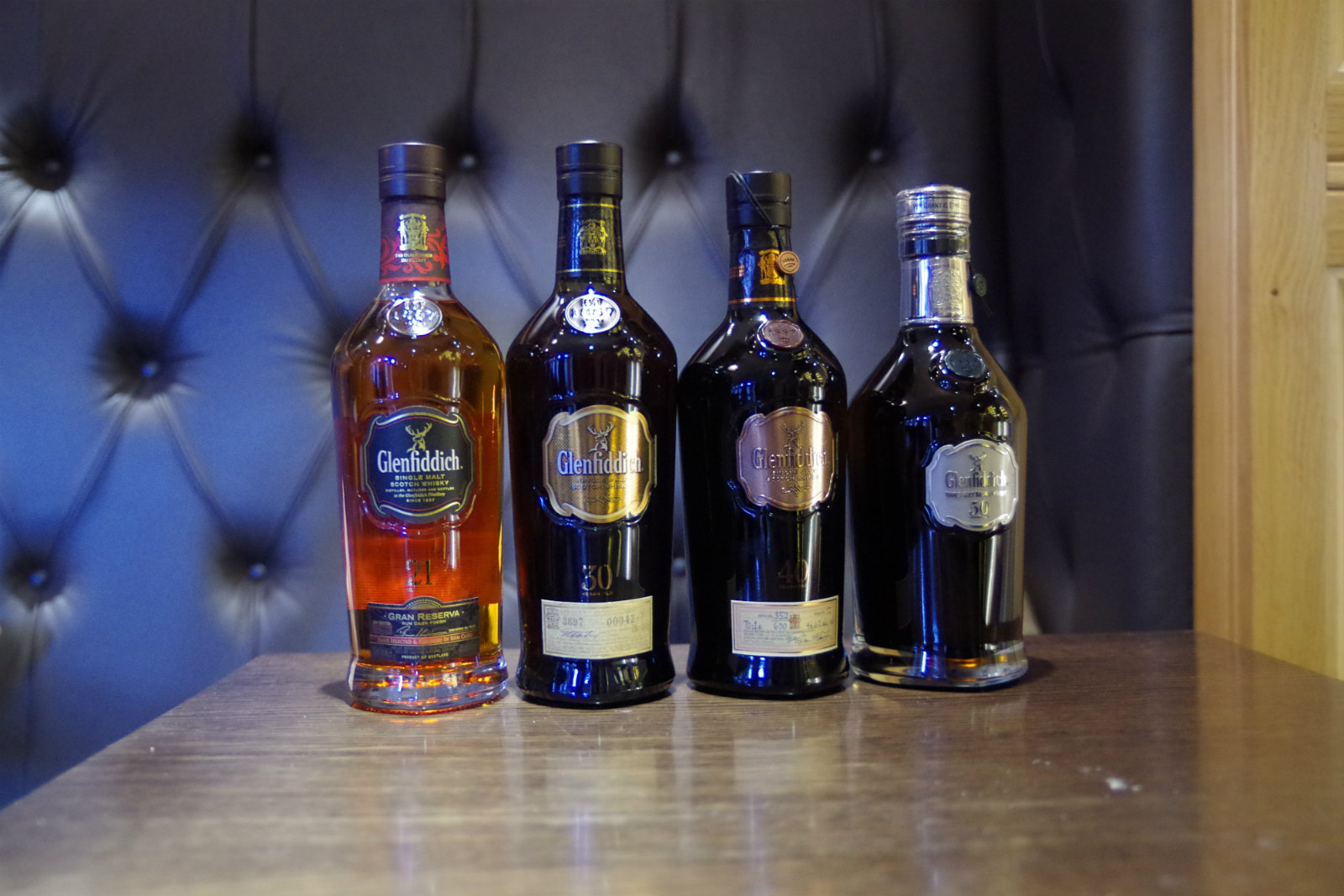
As for their core collection, there are a few age statements most are familiar with, and plenty that most are not. A pear-forward 12 Year Old holds true to the region’s light and fruity expectations. The 15 Year Old, however, yields honeyed-warmth, dried fruits and winter spices. A proprietary Solera Vat (or, a large oak tun) “mellowing” process along with the use of sherry casks and new oak define this age statement spirit. The 18 Year Old feels even more robust, with both Spanish Oloroso wood and American oak contributing vanilla, caramel and cinnamon to the mix. The 21 Year Old’s finishing (or a small amount of time spent after aging) in Caribbean rum casks brings dried fruit and toffee to a vibrant core. And while these might be the most well known, the brand also has a Bourbon Barrel 14 Year Old, a 26 Year Old, an “Age of Discovery” range, a 30, 40, 50 and 55 Year Old—and a series of reserves from the ’70s. There is a lot here, but everything is a variation on the essence of what it means to taste like a Glenfiddich whisky.
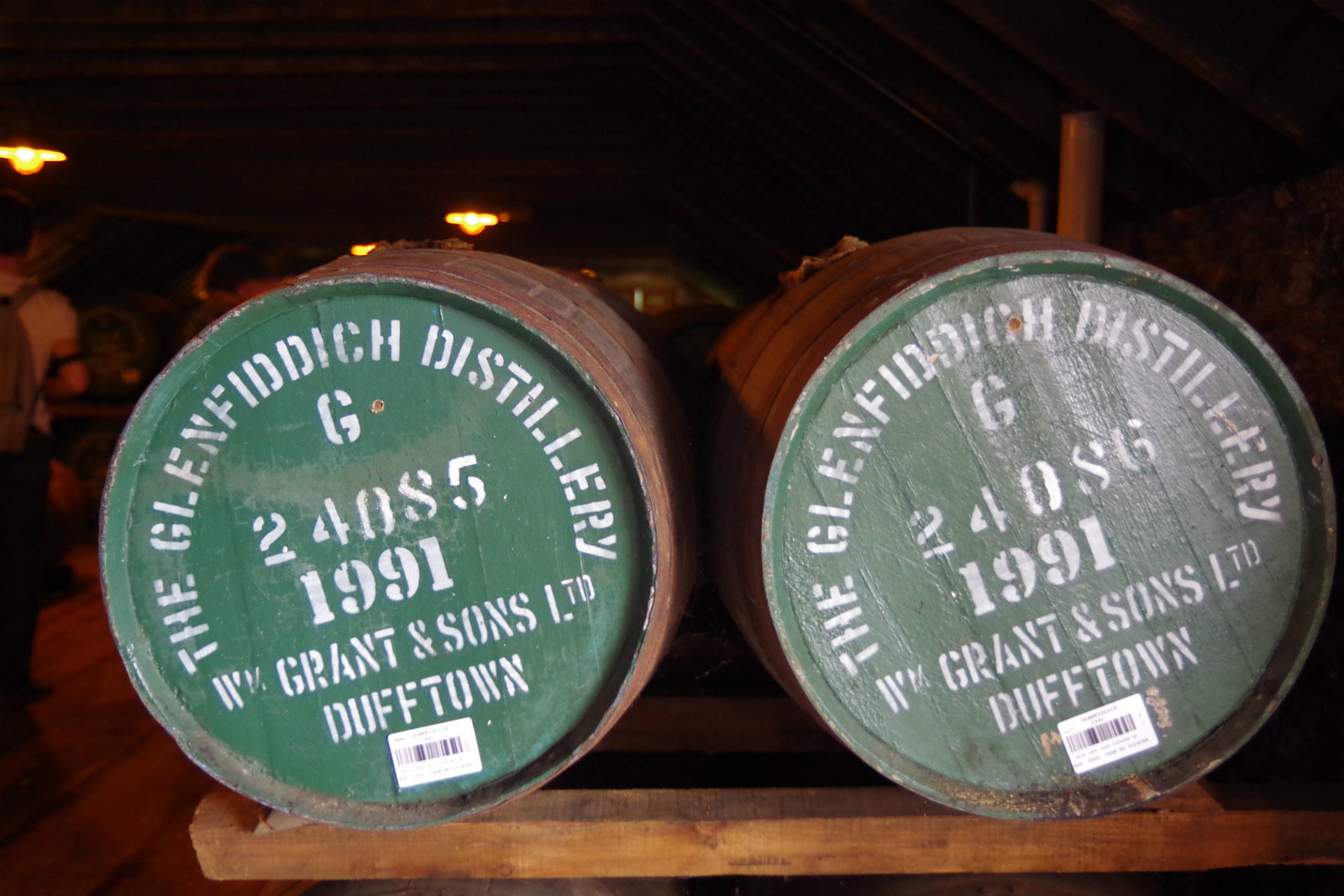
“We’ve always been innovative. It’s a family owned company. There’s a more singular focus on doing what’s right for the distillery, because we can,” Kinsman says. This translates directly to the entire experimental series Glenfiddich plans on releasing. New flavor profiles for both the slow sipper and the cocktail enthusiast will make their way forward. It’s something to be excited about while in the midst of a major whisky boom.
Product images courtesy of Glenfiddich, all other images by David Graver
